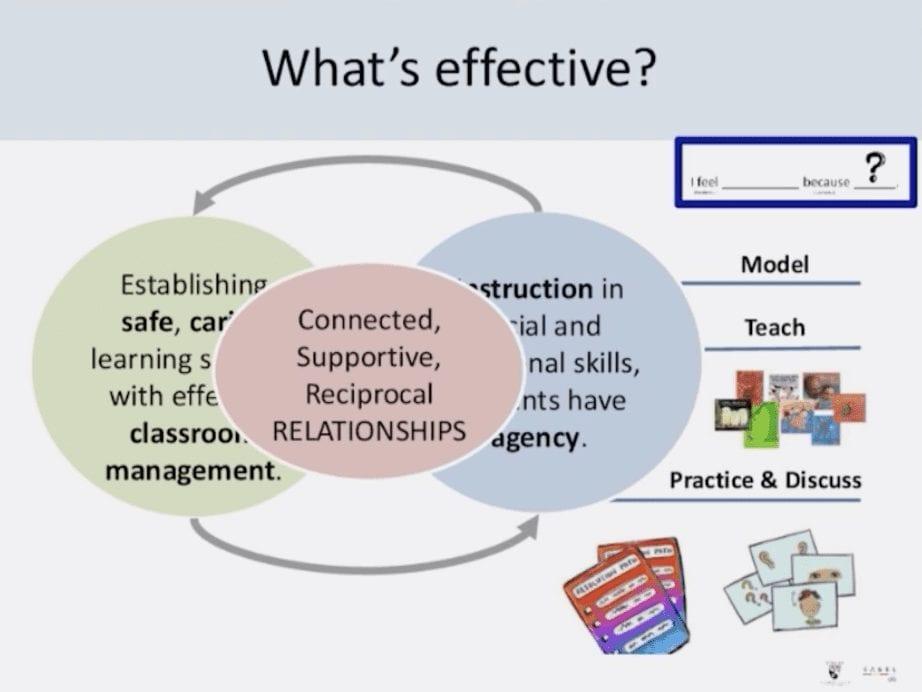SEL for Students with Special Needs: Strategies for Effective Social-Emotional Learning
Social-Emotional Learning (SEL) has become a vital part of education, empowering students to develop critical life skills such as self-awareness, relationship building, and emotional regulation. For students with special needs, SEL is even more important, as it contributes to improved academic performance, better behavior, and enhanced well-being. In this comprehensive guide, we will explore teh significance of SEL for students with special needs, practical strategies for implementation, the benefits, and real-life case studies showcasing its effectiveness. whether you’re a teacher, parent, or school administrator, this article offers insights to create inclusive, supportive learning environments for every child.
Understanding SEL and Its Importance for Special Needs Students
Social-Emotional Learning (SEL) is a framework that helps individuals acquire and apply the knowledge, attitudes, and skills necessary to:
- Understand and manage emotions
- Set and achieve positive goals
- Show empathy for others
- Establish and maintain positive relationships
- Make responsible decisions
Students with special needs, such as those with autism spectrum disorder (ASD), ADHD, learning disabilities, or emotional and behavioral challenges, often face unique barriers to social-emotional development. By tailoring SEL strategies for special needs learners, educators and caregivers can help these students thrive both academically and socially.
Benefits of SEL for Students with Special Needs
- Enhanced Interaction Skills: SEL helps students with special needs express their feelings, needs, and thoughts more effectively.
- Improved Emotional Regulation: SEL programs teach coping mechanisms that reduce anxiety and frustration, leading to better classroom behavior.
- Social Integration: SEL fosters compassion and empathy, making it easier for students with disabilities to develop friendships and positive peer relationships.
- Increased Academic Success: Students equipped with SEL skills often show better focus, motivation, and resilience—key predictors of learning outcomes.
- Boosted Self-Confidence: Mastery of SEL skills can result in higher self-esteem and a positive self-image among special education students.
Strategies for Effective SEL Implementation
Implementing SEL for students with special needs requires thoughtful adaptation of instructional strategies and support systems. Here are actionable approaches to ensure that social-emotional learning is both accessible and impactful:
1. Individualized Instruction and Supports
- Differentiate SEL lessons according to students’ cognitive, linguistic, and social abilities.
- Use visual supports, such as charts, storyboards, and emotion cards, to simplify complex concepts.
- Provide frequent, structured opportunities for practice in a safe surroundings.
2. Incorporate Multisensory Learning Techniques
- Mix auditory, visual, and kinesthetic activities—for example, using songs, videos, role-plays, and hands-on games.
- Consider sensory needs when choosing materials and activities (e.g., fidget tools for students with ADHD).
3. Explicit Teaching of Social-Emotional Skills
- Directly teach and model skills such as sharing, taking turns, and recognizing emotions.
- Break down skills into manageable steps, and scaffold instruction as needed.
- Use social stories and scripts to help students navigate social situations.
4. Foster a positive and Inclusive Classroom Environment
- Celebrate diversity and teach students the value of acceptance and inclusion.
- encourage collaboration and mutual support through team activities and group projects.
- Implement a consistent, predictable routine to provide a sense of security.
5. Engage Families and Support Networks
- Involve parents and caregivers in SEL activities by providing resources and regular updates.
- Collaborate with therapists,counselors,and special educators to create cohesive support plans.
Practical Tips for Educators and Caregivers
- Set Clear, Achievable Goals: Break down social-emotional skills into small, measurable objectives.
- Use Positive Reinforcement: Celebrate progress, however small, and provide specific feedback.
- Practice Patience and Flexibility: Students with special needs may require more time and option approaches to master SEL skills.
- Monitor Progress: Keep detailed records of social-emotional growth and regularly adjust strategies as needed.
- Emphasize Relationship Building: Encourage connections with peers, trusted adults, and community members.
Case Studies: SEL Success in Special Education
Case Study 1: Integrating SEL in a Resource Classroom
At Lincoln Elementary, special education teachers introduced a daily SEL circle time. By using visual aids and social stories tailored to students with autism, staff observed:
- 20% betterment in students’ ability to name and regulate emotions
- Increase in positive social interactions between students
- Fewer behavioral incidents during classroom transitions
Case Study 2: Whole-School SEL for Inclusive Education
Smith High School implemented a school-wide SEL program, adapting activities for students with learning disabilities. The result was a more inclusive climate,with both general and special education students reporting:
- Greater empathy and acceptance among peers
- Improved attendance and participation
- Reduction in bullying and isolation of students with special needs
First-Hand Experience: An Educator’s Perspective
“When I started integrating social-emotional learning in my special education classroom,I noticed a transformation—not just in my students’ ability to express themselves,but in the way they felt about learning and about each other. Tools like emotion wheels, role-playing games, and daily check-ins have become essential parts of our day. The key is consistency and celebrating each little victory.”
— Ms. Laurie P., Special education Teacher
Recommended SEL Resources for Special Needs
- CASEL (Collaborative for Academic,Social,and Emotional Learning)
- Autism Speaks Social-emotional Toolkits
- Positive Behavioral Interventions & Supports (PBIS) resources
- Understood.org: Resources for Learning and Attention Issues
Conclusion: Building a Brighter Future with SEL
Integrating SEL for students with special needs is not just beneficial—it’s essential for creating classrooms where every child can belong, learn, and succeed. Through individualized strategies and a commitment to inclusive education, educators and families can definately help special needs students develop resilience, empathy, and strong self-advocacy skills. By championing social-emotional learning, we empower all learners to build positive relationships, overcome challenges, and reach their full potential.
Looking to implement effective SEL strategies in your classroom or at home? Start small, stay consistent, and remember: every step forward is a step toward a more inclusive and emotionally smart world.

